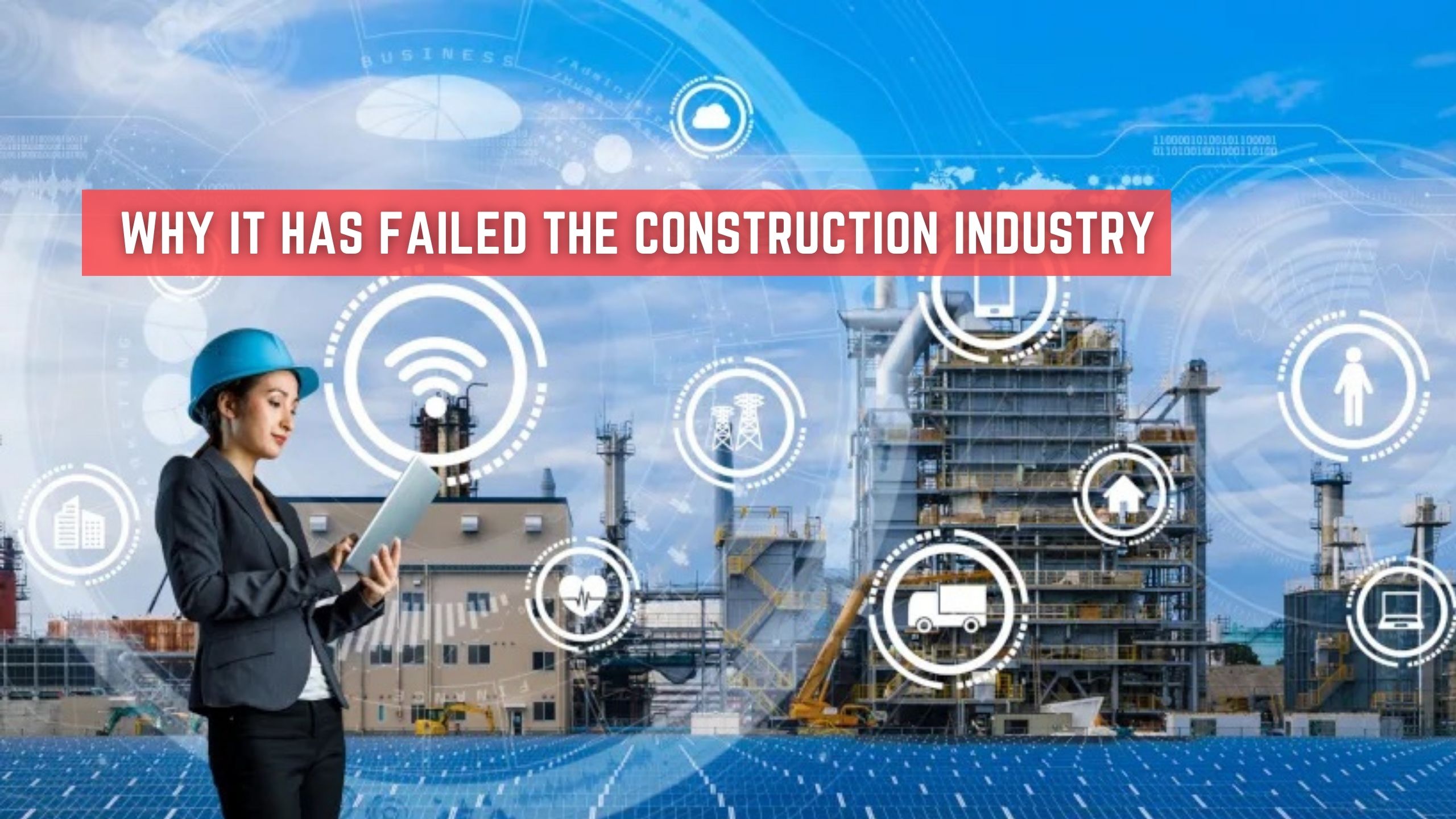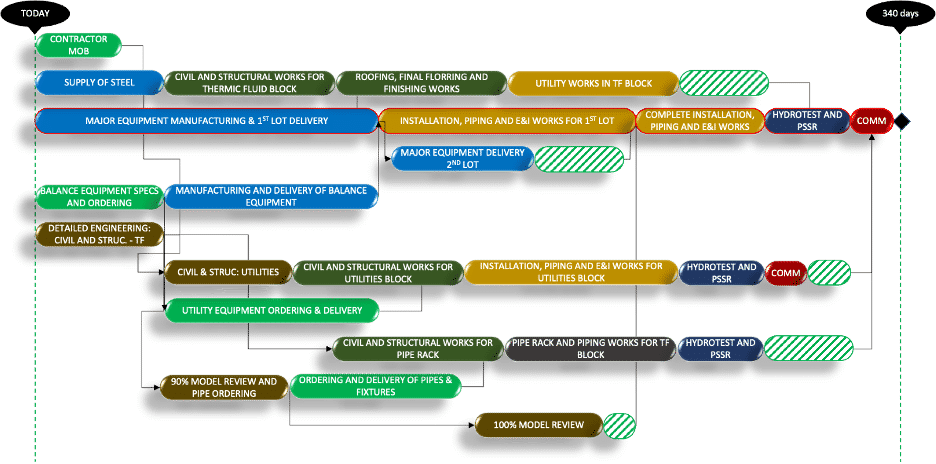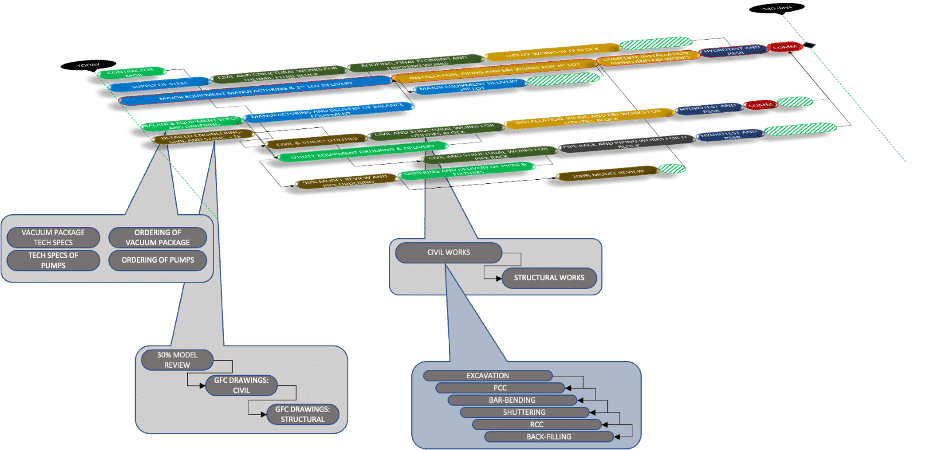[vc_row][vc_column][vc_column_text]
Information Technology has brought immense efficiencies to factories and supply chains, making them faster and more responsive. IT has transformed nearly every industry one can think of and conferred real competitive advantages to its early adopters. However, those transformations and competitive advantages have largely bypassed construction.
It’s not for lack of trying. The industry spent more than $2 billion on IT in 2020 alone on “solutions” that ranged from advanced planning and scheduling to real-time data and management dashboards. But none of it is working. Information technology is yet to deliver on its promise to the Construction Industry, which is undoubtedly one of the largest industries on the planet.
Even a casual look reveals that construction projects still look a lot like they did 20 or even 50 years ago. Even today, most construction projects are often managed on gut feel instead of systematic information and insights. Too often, they’re grossly late and over budget. A lot of money is being lost in the process, and progress is stalled. It’s fair to ask the question: Why? What exactly is going on?
Chasing Down the Wrong Problem
Construction projects are inherently uncertain. Delays, changes, and surprises are the norm. So, instinctively and understandably, engineering and construction have looked to IT to try and reduce or mitigate those uncertainties. In general, the thinking has gone something like this. “If we create more detailed plans, then we can track the minutest tasks in real-time. That way, we all have tighter control.”
The approach isn’t just wrong; it’s genuinely counterproductive. In fact, it overcomplicates everything.
Planning projects in ever more detail don’t eliminate uncertainties; it compounds them. Elaborate plans can’t be kept current. And, as they get more complex, they get more volatile. Too many details are constantly changing every minute.
The information these plans produce, such as expected finish dates, or daily schedules for the frontline, isn’t reliable. And this is why managers are forever chasing dead ends. You might have gotten used to either saying or hearing this every day, “Let’s expedite this. We need to do this right now. No, wait. Sorry. We’ve just heard that something else is critical now.” This is why so many construction projects even today are managed outside of formal project management systems.
A way to visualize this is to think of planning your family’s next vacation. You can’t predict precisely when everyone will shower, or who will have coffee, or the exact moment you will all leave the hotel. A finely planned day, down to the minute, might give you a feeling of control, but that quickly evaporates. The whole plan gets tossed the minute one thing goes sideways.
However, you can generally predict that you’ll likely have three meals during a given day. Similarly, you can plan to visit two places in this neighborhood and one place in that other neighborhood on this trip. In very broad strokes, you could create a workable concept about what and when things will happen.
It’s the same in projects.
And before you say, “Can’t we predict changes, delays, and surprises with AI?” let’s remember that AI can only recognize patterns; it can’t predict delays, changes, or surprises.
Focusing on the Right Problem
From boardroom executives to frontline supervisors, construction professionals like you and me are outstanding at responding to daily delays, constant changes, and frequent surprises. But complicated project plans make our jobs nearly impossible since the information we rely on is unreliable.
So, through our fieldwork, we at Realization Technologies began exploring and seeing construction projects in a whole new light akin to a traffic flow on the road, and we soon discovered a brand new world. One, where we could make far better use of real-time computing to ensure all the traffic flowed smoothly without any disruptions.
We understood your needs as project professionals and realized what you have been missing all this time.
It is that live bedrock information helping you all to focus and synchronize your team efforts to drive and accomplish project goals.
A good example here is Google Maps. The app is so good and reliable that nearly every driver uses it today to navigate better in traffic. Google map facilitates this by sending drivers constant alerts and providing clear and concise directions to help them reach their destination. It’s not complicated. In fact, it’s pretty simple, and it works.
Now, it certainly looks like Google Maps is all about real-time data and intelligent algorithms. You might think that there are a lot of similar solutions offered by IT vendors. But if you observe closely, there is something else going on as well. Google Maps works because there’s a stable map in the background that never changes. Imagine you are driving to a destination trying to follow Google Maps, but the map keeps changing. What if you took a left turn as per the map’s instruction, but it suddenly shows you should have turned right. You’d probably throw your phone out the window out of frustration!
So, having a stable map is essential because it means you always know where you are, relative to where you’re going. You can always continually measure your progress against your goal.
Project Maps
So rather than a set of complicated, always-changing plans, project professionals like you in the construction and engineering industry need project maps. A stable reference that helps inform you and the team where you are currently with respect to your desired project outcome and goal
Building a project map isn’t difficult. A map for our “vacation project” discussed earlier would be pretty simple at a fundamental level. For example, let’s say you are traveling to New York City on Friday, and you are planning on staying for a week. You might visit Central Park, see a show, and go to Times Square during this time. You will probably also want to explore some good restaurants. That’s the “project map” for you in the broadest sense.
The great news is that it is possible to connect this map to detailed events or steps. For instance, ‘go to Central Park on Monday when the crowd is less. But it feels easy and less complicated, seeing that you don’t need every single detail scheduled for you to kick start your vacation planning.
And that’s how you can create maps for large and complex projects too.
You need to understand here that project maps by themselves aren’t good enough. They need to be automatically connected to detailed execution steps as and when those details become available. They also need to be live with real-time data and intelligent algorithms working together to drive you towards your desired project outcomes.
Going beyond Google Maps
What you can do in projects is something even better than Google Maps. You can build a project delivery system that can focus and synchronize the efforts of the entire project team akin to all the drivers on the road. This way, you could prevent unnecessary blockages and help your team proactively remove actual bottlenecks.
Not only can project maps finally enable an “always live” information system that gets used by executives as well as frontline supervisors, but their simplicity is also liberating.
For example:
➡️ Project plans for the engineering and construction of a power plant that contains about 100,000 tasks rarely have one integrated plan for the entire project. Typically, there are 15 20 plans that have to be synchronized manually on an ongoing basis. It usually takes a few months to create all these plans.
➡️ On the other hand, a project map can capture the entire project from beginning to end in about 1,200 super-tasks, with a total of 100,000 tasks embedded inside those super-tasks. And, all it takes is about 2 weeks to create a project map.
➡️ Primary scheduling happens at the 1,200 super-task level, and the detailed schedules for the 100,000 tasks are then automatically derived from the primary schedule. Daily progress and other updates from engineering and supply chain management systems can automatically flow all the way up to the super tasks, which will provide you with the information to facilitate better and faster decision making to reach your project goals just the way how Google Maps takes you to your final destination.
Example of a Project Map and How it Encapsulates Detailed Execution Steps
Project status at the time of the creation of the map:
➡️ Overall plant layout and preliminary basic engineering is completed
➡️ Major equipment is ordered, and binding data is received
➡️ The main contractor is finalized
A key point to note: the original project plan had ~1100 tasks, while the project map has 22 super-tasks. Scope and dependencies do not change at this level, but management decisions about resourcing, cash flow, and recovery actions can still be made. The picture below shows how detailed execution steps are embedded in the project map.
Learn more about Smart Project Maps.
In Summary
Construction projects even today are riddled with delays and other uncertainties. To successfully deliver construction projects which are inherently challenging and complex, we need to rely on live information that will help our teams to execute projects better and address any bottlenecks on the way quickly. Realization Technologies has done just that through their technology solution “Smart Project Maps”.
Smart Project Maps is similar to a Google Map and helps you navigate your projects’ complexities through a simple yet powerful technology interface, enabling you to create a project delivery system. So, you can focus and synchronize the efforts of the entire project team to prevent unnecessary blockages and proactively remove actual bottlenecks to deliver projects successfully.
To learn more about this fantastic solution, book a demo and talk to the team at Realization Technologies.
About the Author, Sanjeev Gupta

Before Realization, Sanjeev founded Thru-Put Technologies, a leading provider of factory planning and scheduling systems for complex manufacturers. In 2016, Sanjeev was honored with a Lifetime Achievement Award by the Theory of Constraints International Organization for his contributions to project and factory planning and control.
A graduate of Carnegie Mellon University, Indian Institute of Technology-Delhi, and Virginia Tech, Sanjeev has 8 patents in project delivery optimization. He has published more than 40 articles in trade magazines, including Industry Week, Harvard Onpoint Magazine, and publications of professional organizations like the Project Management Institute and American Production & Inventory Control Society.
To connect with Sanjeev, please check his LinkedIn Profile. [/vc_column_text][/vc_column][/vc_row][vc_row][vc_column][vc_column_text]
[/vc_column_text][/vc_column][/vc_row][vc_row][vc_column][/vc_column][/vc_row]




















